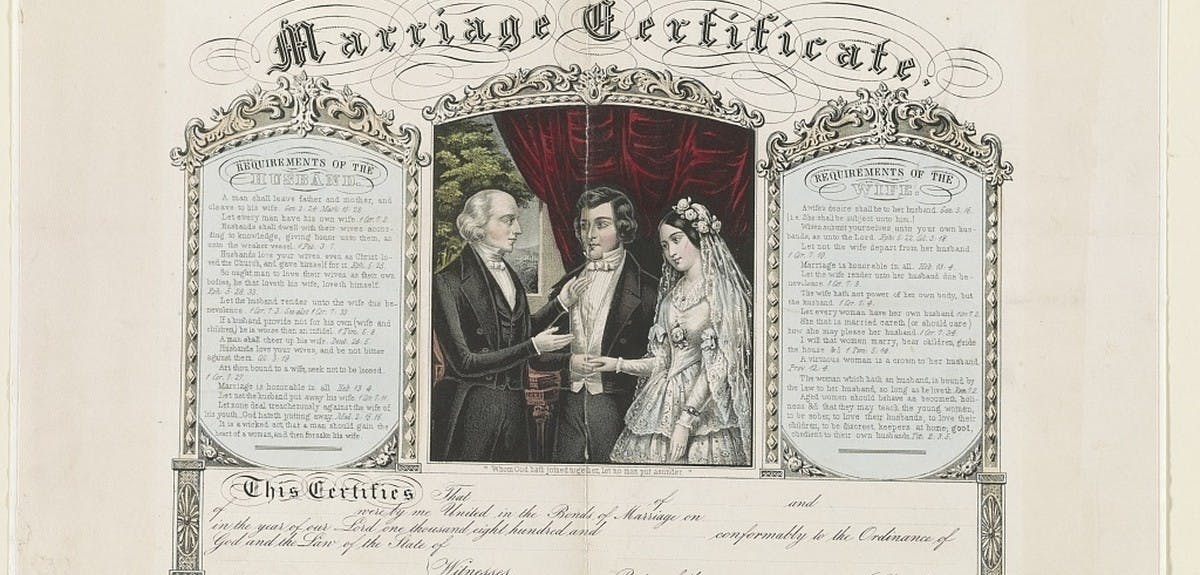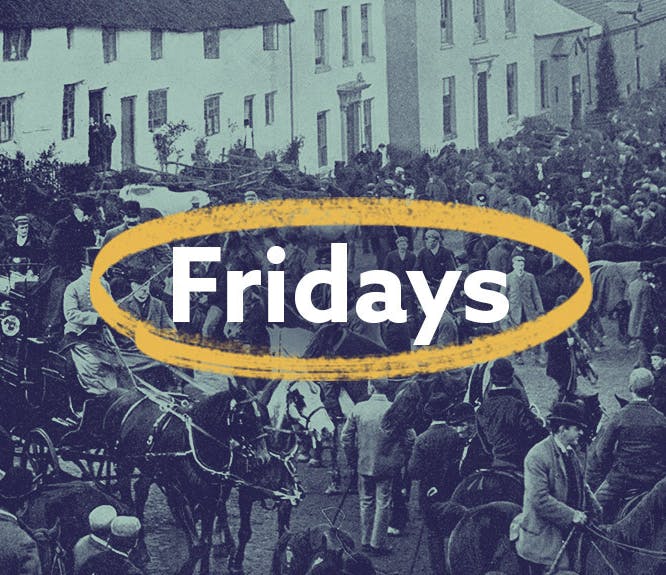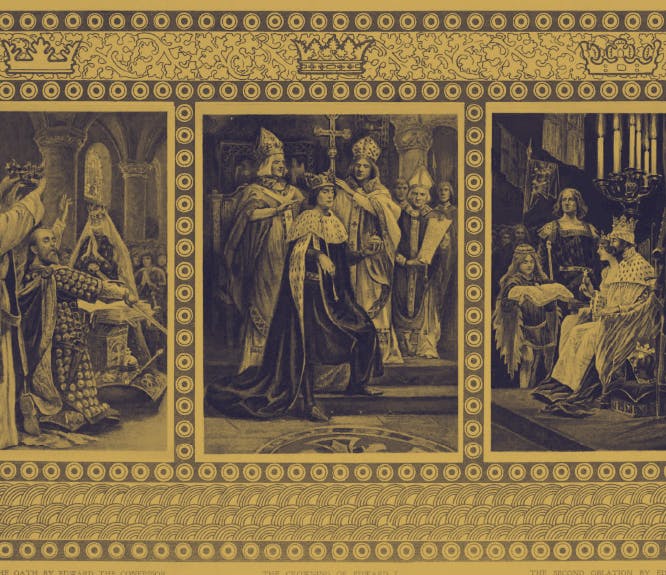What every genealogist needs to know about American marriage records
3-4 minute read
By The Findmypast Team | May 9, 2016

Marriage records are perhaps the most valuable vital records due to their wealth of genealogical content. The most helpful marriage records provide maiden names, parents' names, birth information and more.
But American marriage records are tricky because of the uneven development of municipalities in the United States. The responsibility of recording marriages falls to the states, and many states have different methods, rules and regulations.
It's important for a genealogist to have a basic understanding of the different types of marriage records and what kind of information each may offer. Record keeping evolved as America grew from a colonial settlement to a world power.
Before state governments existed, record keeping duties fell to the town or county government. Typically, as the government - whether it was at the state, county or town level - became more developed, so did their record keeping systems. Marriage records from frontier or early colonial territories will be notably short on details, providing not much more than marriage registers. Later records, however, will include substantial detail about all individuals involved.
Our marriage collection spans over 350 years of American history and includes several different kinds of marriage records.
While each type will offer a slightly different level of detail, the good news is that you may find your ancestors appear in more than one kind of marriage record. If your initial find didn't offer the information you hoped for, see if it's plausible that there is another type of record out there.
Let's take a look at the kinds of records found in our U.S. Marriages collection.
Intentions to marry
Our earlier ancestors usually made public announcements of their intention to marry. Also known as marriage banns, these announcements were made to the community several weeks before the wedding date, giving members the chance to protest the legality of the marriage. The tradition is firmly rooted in England and Wales, and many early colonial settlements and states had statutes that required this. It was most common in New England and the South prior to the mid-19th century.
Bonds
Marriage bonds serve a similar purpose to banns, or intentions to marry. Bonds essentially served as a guarantee that there wasn't any legal barrier to marriage, which might be related to the couple's age, blood relations or prior marriages. Bonds would guarantee the groom would pay a certain amount of money to the state or colonial government if the marriage was discovered to be illegitimate in any way.
Registers
Marriage registers are sometimes the only evidence we have of our earliest ancestors' marriages. Municipal or religious officials were required to record the names of those they married in a register or book, even in locations with otherwise sparse record keeping.
This information was recorded in addition to other documents like licenses, applications or certificates (when available), so don't end your search after only finding the register. Marriage registers are usually thin on information, providing only the names of the couple and the date and location of the marriage.
Registers can help determine the proper municipal archives to zero in on when searching for a certificate or license, and for early settlements and frontier towns, may be the only records still available.
Applications
An application for a license to marry is a more modern record that shows a couple's intent to marry. In most states, there is a waiting period between when a couple fills out an application to marry and when an actual license to marry is issued.
These documents are usually submitted to a town or county clerk, and actually have more information than the marriage license itself. For this reason, they're worth tracking down even if you have already found the marriage license. The location of the marriage license can provide a vital clue to the probably location of any existing application.
Licenses
Beginning in the mid-19th century, states began to require couples to formally apply for authorization to marry. The requirements differ in each state, but the certificate would generally be issued to the couple after a short waiting period (and medical tests in certain states).
Though the application for the marriage license may hold more information, the marriage license itself often provides a lot of information too, including names of parents & witnesses, addresses, birth dates and medical examination results if applicable.
Certificates
Marriage certificates offer documentary evidence that the couple actually married. This is filled out by the individual that performed the ceremony, whether religious or civil - many couples will have both a civil and religious marriage certificate.
Copies of civil records are often held by county clerks, though in many cases these are also saved by the family itself, in order to commemorate the significant event. These records can be beautifully designed and sentimental in value, and many families treasure them beyond their mere genealogical value.
Read more: Inside the U.S. marriage collection: What states are available to search now
Related articles recommended for you

Family trees of The Crown season 6 actors reveal secrets and surprises
Discoveries

Acting genes and wartime ancestors: Here's what we've discovered about the family history of The Great Escaper's cast
Discoveries

Peruse parish records and Scottish newspaper pages with this week's exciting release
What's New?

